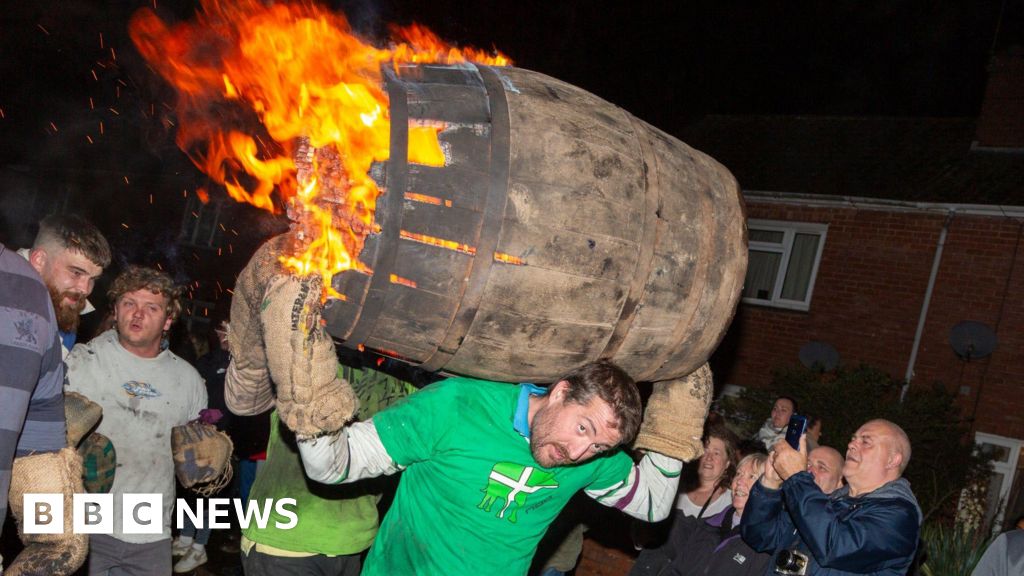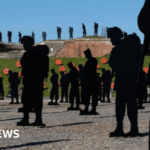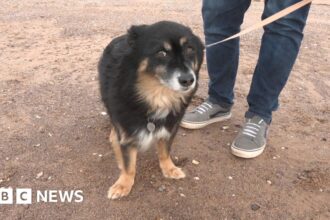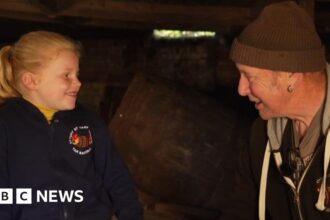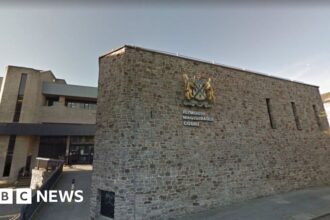Erin Blackin Ottery St Mary
 Nigel Fowler
Nigel FowlerA rural town is ready to host one of the most “exhilarating” annual events in the country where local people run through crowd-lined streets with flaming barrels above their heads.
Organisers said “not much can prepare you” for the tradition of Ottery St Mary Tar Barrels, which has taken place in the Devon town for so long its true origin has been lost to history.
On Wednesday the town’s population will more than double with up to 20,000 people expected.
During the evening selected town residents, including children as young as seven, take turns to run through the streets carrying burning wooden firkins in an “ancient rite of passage,” Andrew Wade, president of the Tar Barrels Committee said.
Mr Wade has been a member of the committee for 50 years and said the experience was “exhilarating”.
“You’re naturally a bit worried ‘am I going to get burnt?’ but it doesn’t happen like that,” he said.
“You’ve got the right gear on to look after yourself and if you run, the flames lap behind you.
“It’s exhilarating, of course it is, and it’s nice to be able to say you’ve done it.”
The history of Ottery Tar Barrels
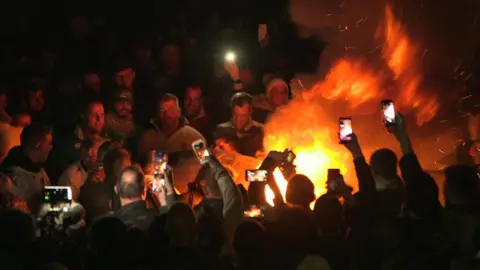
Mr Wade said there were “lots of ideas of how it first started” but looking back through history, “most of it was to do with 1605 when bonfires and effigies were burnt and barrels were plentiful”.
“I think it’s more to do with the gunpowder plot than anything else,” he said.
While the burning of tar barrels is not exclusive to Ottery, Mr Wade said the scale and excitement of other events was “nothing anywhere near like we do”.
“The barrels used to be rolled, that’s why the people are called barrel rollers,” he added.
“Someone probably decided I’m fed up with this, I’m going to lift one up and carry it – and there it all started.”
The art of barrel rolling has been passed down through the generations and only Ottregians – those who are from Ottery St Mary – are allowed to take part.
What happens during the day and evening?

The day starts with a bang at about 05:30 GMT.
Hand held cannons, similar in looks to a piece of bent pipe, are filled with pyrotechnic powder and fired to create a “spectacular flash and a loud explosion”, organisers said.
The evening event starts at about 16:00 with the children’s barrels.
Traditionally known as ‘Boy’s Barrels’, the small barrels or firkins are rolled by boys and girls as young as seven.
Older children then roll the medium-sized kilderkins before the lighting of a bonfire in St Saviours meadow at 18:30.
At 19:00 the women’s, men’s and intermediate barrels get under way, reaching a climax several hours later with the ‘Gurt Big Un’ – The Midnight Barrel.
A total of 27 barrels are carried throughout the evening.
How does it work?
Today the barrels are gathered from cider and wine makers across the country and the inside is coated with tar to help control the burn time.
The barrels contain a mixture of paper and straw which is set alight.
Mr Wade said: “Someone who is doing the heating of the barrel will decide when it’s ready and off they go, they pick it up, run around and pass it to each other.”
“What used to happen was individual pubs would provide a barrel on November 5, people would go in there have a few ciders, light the barrel up and run up and down outside the pub.
“All the areas are slightly different now because of crowd control, but generally the locations are based on the traditional pub names.
“None of the participants are allowed to drink anyway now,” he added.
“If they want a drink they do it the day after and have a good session then.
“It’s very much controlled compared to what it was 30 years ago.”
What do participants wear?
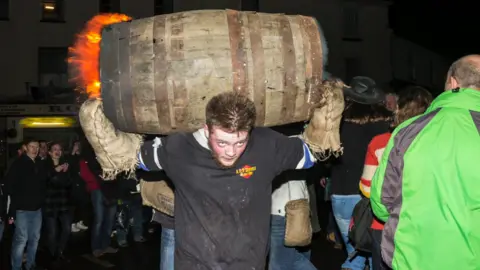
The only piece of “specialist” clothing worn for the event are gloves made of heavy sacking.
“Lots of them will wear the same thing every year, England rugby shirts seem to be quite popular,” Mr Wade said.
“A lot of the clothing comes from the local charity shops.
“They strap their arms up and they may put Vaseline on their face perhaps, but that’s it.”
How much does it cost?
Mr Wade said it cost about £90,000 a year to host Tar Barrels, with a significant proportion going towards insurance.
He added the money raised for the self-funded event also included paying for marshalling, a control centre, road closures, car park attendants, signage and lighting.
“As far I’m concerned people come at their own risk to a thing like this, but equally we put in a lot of time and money to put this thing together.
“All the agencies know what to expect, we work very well together so if it’s working, it’s fine.
“It will carry on as long as there are people in Ottery who want to do it.”
Custodians of the tradition said it transported the town back to a time where “ritual ruled over anything a health and safety officer had to say”.
They added: “Please enjoy it but don’t interfere with it, remember it belongs to Ottery, it is our way of life and our tradition.”

